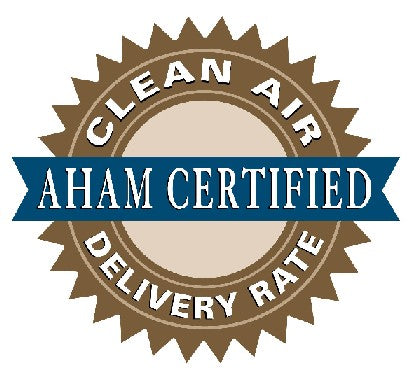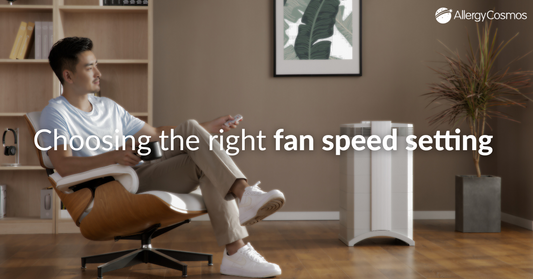I recently wrote about some international manufacturers of air purifiers who have called for the European Commission to adopt the Clean Air Delivery Rate (CADR) standard used in the United States to rate the performance of air purifiers. The CADR rating has been devised by the Association of Home Appliance Manufacturers, a trade group representing many of those companies who make air purifiers (and other appliance). The AHAM's definition of the CADR is 'the rate of contamination reduction in a test chamber when the unit [the air purifier] is turned on, minus the rate of natural decay when the unit is not running, multiplied by the volume of the test chamber in cubic feet'.
CADR – How reliable is it?
There are some aspects of the CADR testing programme that means it is not as scientific, or as objective, as we would like it to be in order to be part of a proper air purifier buying guide. Consider this:
- The testing method used during the CADR test does not distinguish much between air purifiers with a good performance and those which are mediocre. The ranking of different models is not widespread – a good air purifier will score only a few points more on the CADR rating than a bad model and no air purifier ever failed the CADR rating.
- Natural decay is not a constant – it is different on each test and an average value should be used for CADR testing for more accurate results.
- A big drawback is that only removal of particles, not gases, is measure by CADR’s air purifier test. This means that a big part of the air purifier's performance is not being measured.
- The air purifiers to be tested come directly from the manufacturer to AHAM, who are paid to do the CADR test for the company. This is far from objective – a sample model should always be purchased and tested anonymously. Furthermore, the CADR rating should only reflect the performance of the actual recent model of air purifier you will get when you buy the model online or in a shop. Some manufacturers make good products, get good test results, and then start producing an inferior model (under the same name) to save money.
- CADR tells you nothing about the long-term performance of an air purifier. Some units were only CADR tested for 2 minutes (120 seconds). It is easy to do well in a test like this for a couple of minutes, but you want to be sure your air purifier performs at the same high consistency over a 6, 12 and 18 month period of time.
Furthermore, a recent paper by Consumer Reports www.consumerreports.org also points out the limitations of the CADR. During the CADR test, the value of the air purifier’s performance is only measured at the air purifier's highest speed setting (a setting most users will not use very much). The CADR test does not tell you what the performance of the air purifier is like at the lower, quieter settings - which you may prefer. Also, CADR does not indicate whether an air purifier emits ozone. So, it may be very efficient in taking particles out of the air for two minutes on the highest speed setting, but at the same time, be pumping out a pollutant (ozone) that can actually exacerbate asthma and damage your lungs.
Other Air Purifier Test Labels
There are some other issues with air purifier labels which you should be aware of:
- Energy Star. If an air purifier is Energy Star-certified, that means it is energy efficient compared to models that don't bear this label. Energy efficiency is a good attribute, of course, but be aware that Energy Star says nothing about performance or ozone generation of an air purifier.
- Asthma & Allergy Friendly. This label comes from the Asthma and Allergy Foundation of America (AAFA). It means that the air purifier has met criteria set for reducing significant allergens like house dust mite, pet dander and pollen. Tests are done by labs that are approved by the AAFA. But the tests are, like CADR, done at the air purifier's highest speed and give no indication as to whether ozone is generated.
- ARB. The Air Resources Board of California now says that any air purifiers sold to residents of the state should emit no more than 50 parts per billion of ozone. The label says: "This air cleaner complied with the federal ozone emissions limit." This label does not tell you anything about the air purifier's performance.
Clearly, there is more to be done to ensure consumers get scientific, objective and comprehensive labelling on an air purifier and the CADR test does a disservice to consumers who are looking for unbiased and factual information about an air cleaner's true performance.




